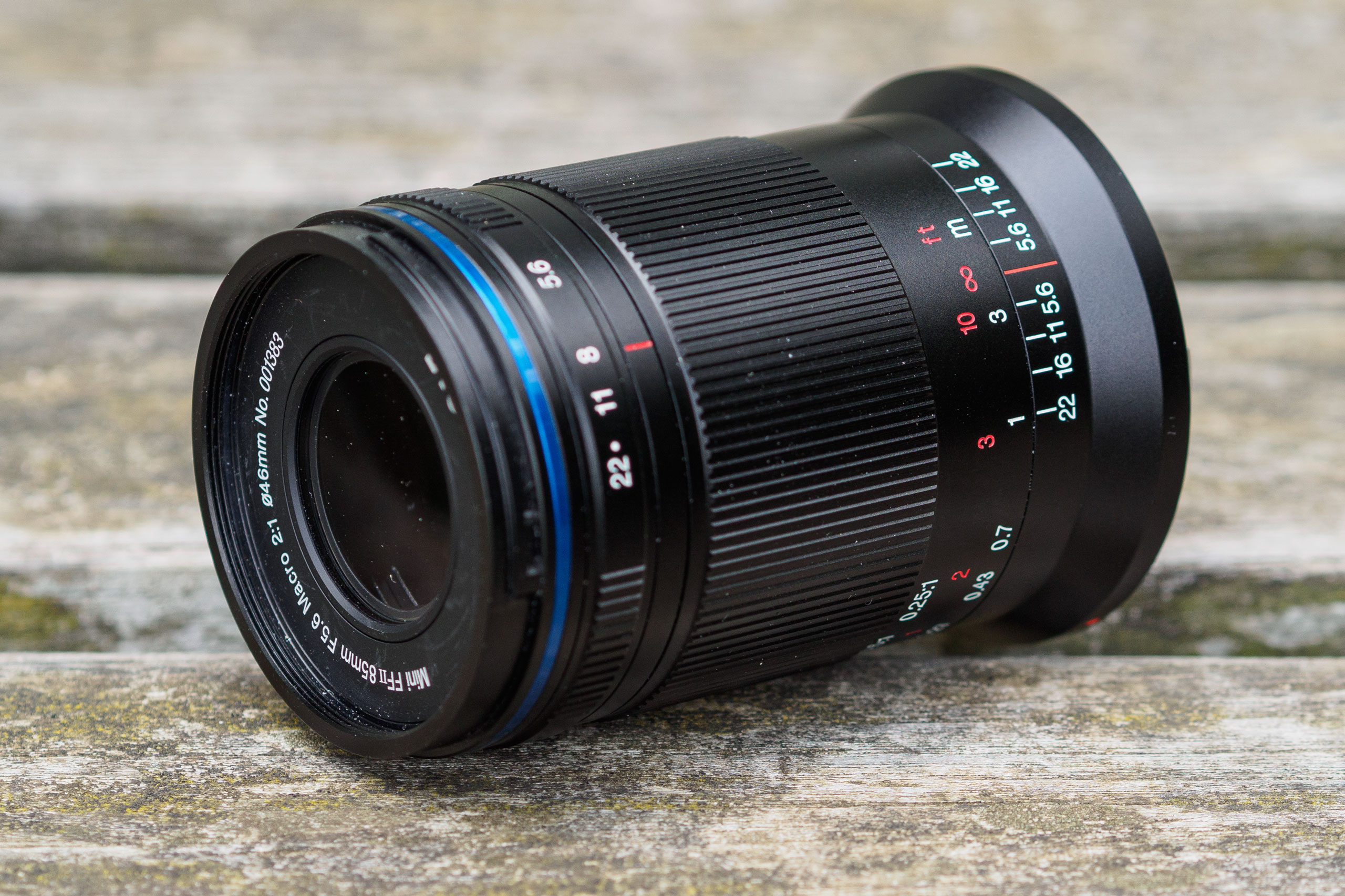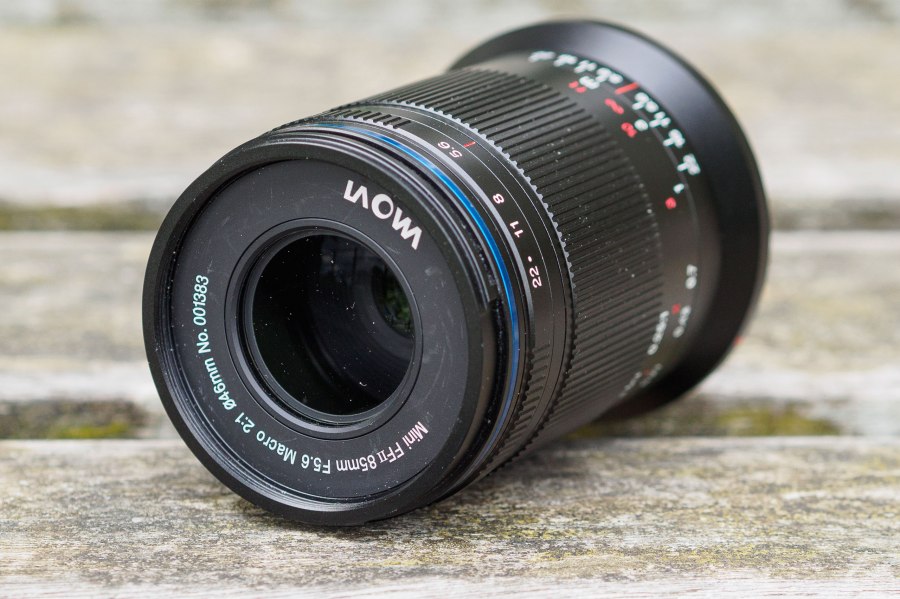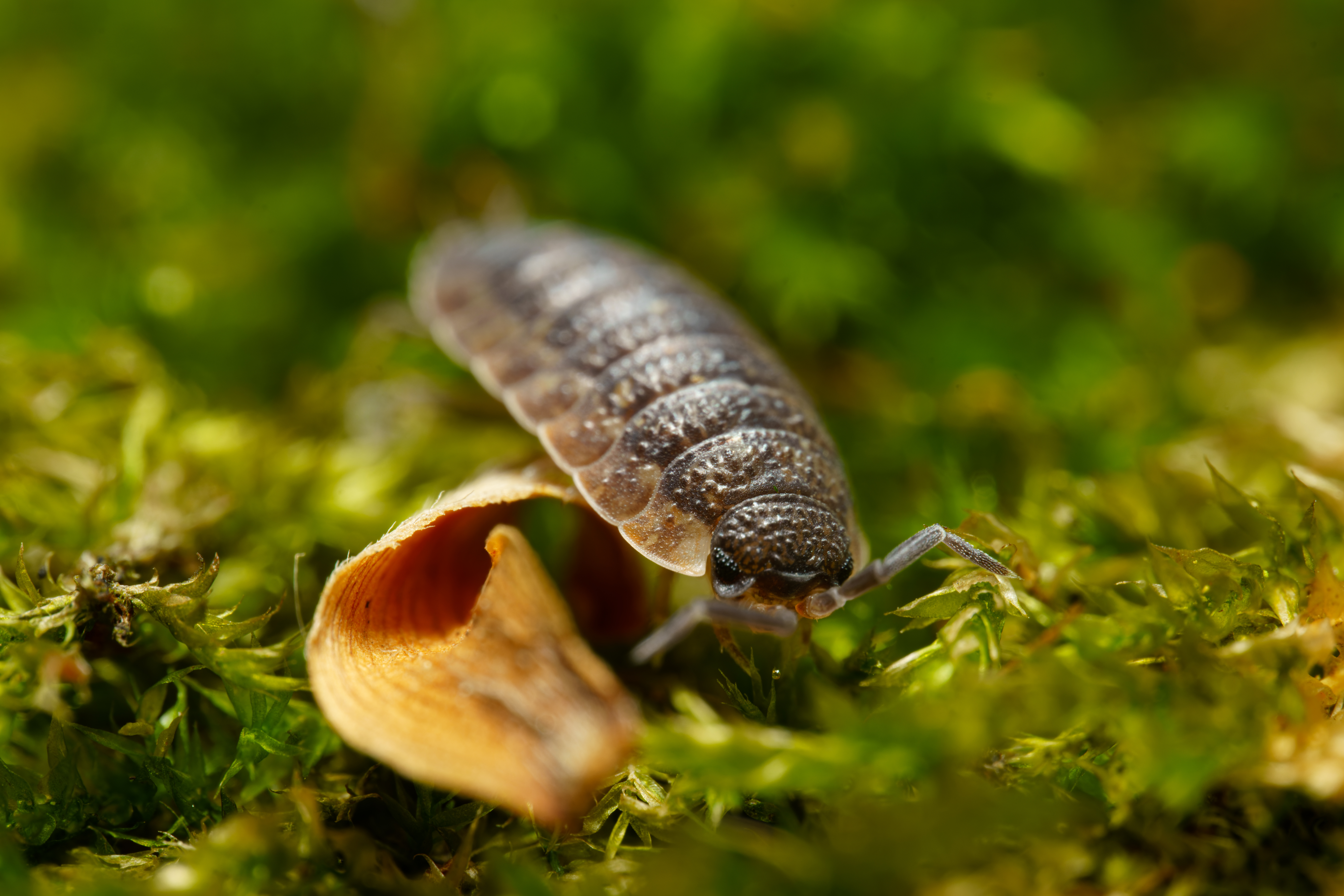Laowa 85mm f/5.6 2x Ultra Macro APO at a glance:
- Macro lens giving twice life-size (2:1) magnification
- For full-frame or APS-C mirrorless cameras
- Compact size: 53mm diameter x 78mm length, 291g
- Takes 46mm filters
- Available in Canon RF, Nikon Z, Leica M, Sony E and L mount
While full-frame mirrorless cameras have become increasingly popular, thanks to their compact size and sophisticated features, it’s clear that overall, their lenses are no smaller than their SLR counterparts. In part, this is due to simple physics – there’s only so small any given kind of lens can be made – but it also reflects a desire on the part of the camera makers to build optics that meet the demands of high-resolution sensors. If you want a lens to be sharp across the frame at maximum aperture, it’s going to need a lot of optical elements to correct aberrations, which inevitably means it’ll be large.
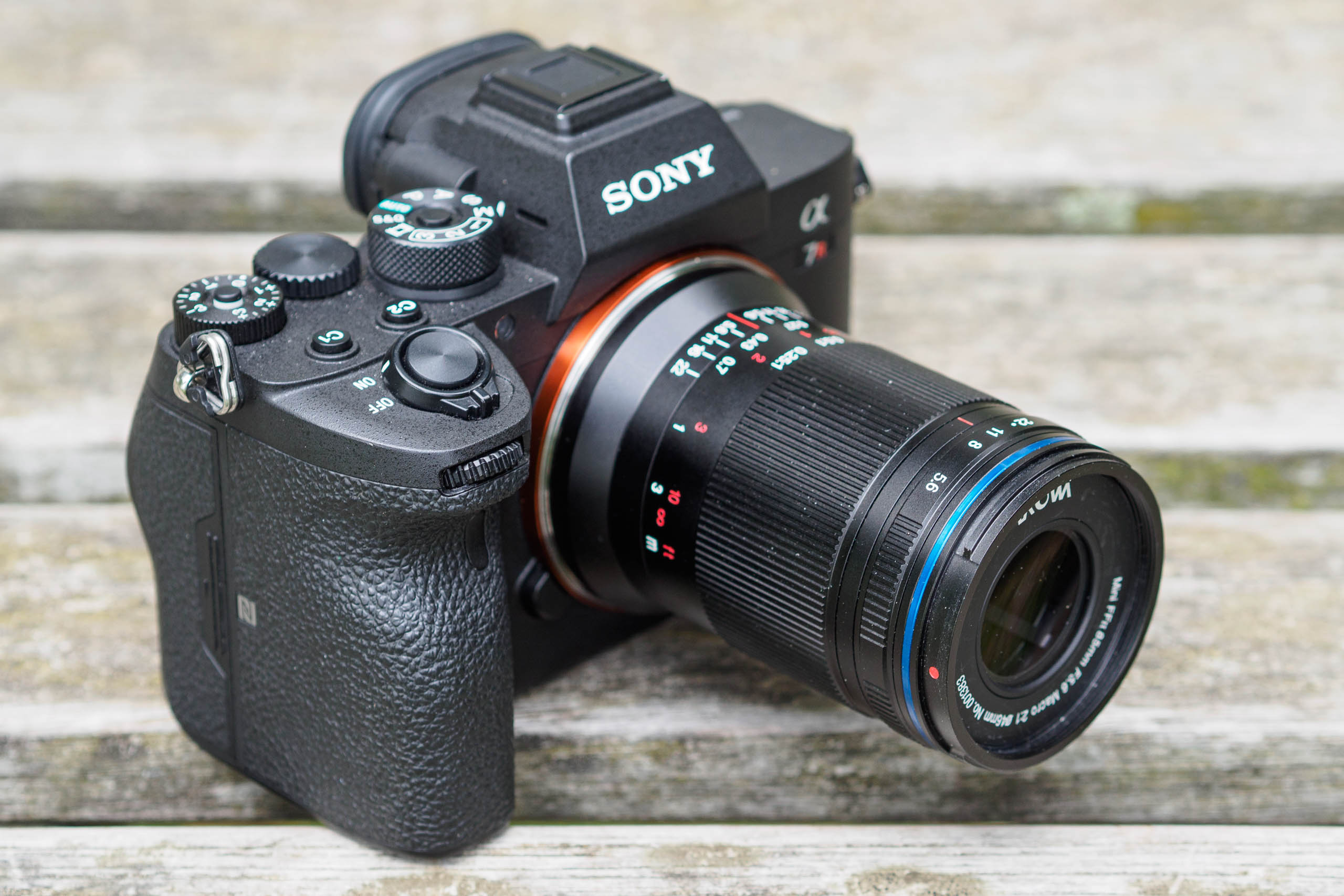
The Laowa 85mm F5.6 provides twice life-size magnification in a remarkably small size for a full-frame macro lens
One way around this is to build lenses with smaller maximum apertures. This is what Venus Optics has done with its Laowa 85mm f/5.6 2x Ultra Macro APO. By reducing the aperture by two stops compared to traditional designs, it’s built one of the smallest full-frame short telephoto macro lenses on the market, rivalled only by the Leica Macro-Elmar-M 90mm f/4. But while the Leica only achieves half life-size magnification, Laowa has gone well beyond this to twice life-size, meaning that the lens can focus on a subject area measuring just 18 x 12mm.
Crucially, Laowa has achieved this with a lens that’s markedly more compact than familiar f/2.8 macro designs. In fact, it measures just 78mm long and weighs less than 300g. This is practically half the size of the firm’s full-frame 100mm f/2.8 macro, and only fractionally larger than its 50mm f/2.8 for Micro Four Thirds. At £449, it’s also relatively affordable. But how does the lens measure up in practical use – is it one of the best value macro lenses you can buy? Let’s find out.
Laowa 85mm f/5.6 2x Ultra Macro APO: Features
Like all Laowa lenses, the 85mm f/5.6 is a manual focus design. The aperture is also set manually, via a traditional ring towards the front of the barrel which directly drives the 7-blade diaphragm. There are no electronics onboard for any of the available versions, namely Canon RF, Leica M, Nikon Z, Sony E, and L-Mount. This means that the lens can’t pass focal-length or aperture information to the camera, so you won’t see this in the EXIF data of your images.
Some cameras won’t fire the shutter if they can’t detect that a lens is attached, which means that you may have to enable a ‘Shoot without lens’ setting (or similar) to use this lens. If your camera includes in-body stabilization, you’ll need to set the focal length manually for the system to apply the appropriate level of correction. It’s also worth noting that while most cameras include 5-axis stabilisation, which counteracts how the blurring effect of hand-shake is magnified when shooting close-ups, that won’t work with this lens, as the camera doesn’t know the focus distance.
Optically, the lens employs 13 elements in 9 groups, of which three are made from extra-low dispersion (ED) glass to minimise chromatic aberration. Laowa is clearly confident this has been successful, as it’s given the lens an APO designation (for apochromatic), meaning that colour fringing should be all-but eliminated. Focusing is internal, with 2:1 magnification achieved at a minimum focus distance of 15.3cm. The lens sports a 46mm thread for attaching filters and comes with a bayonet-fitting cylindrical hood to combat flare.
While the Laowa 85mm f/5.6 Macro is designed for use on full-frame mirrorless cameras, it can of course also be used on APS-C models. In this case, it’ll give an angle of view equivalent to 128mm on full-frame, and maximum magnification equivalent to 3x life size.
Laowa 85mm f/5.6 2x Ultra Macro APO: Build and Handling
Despite its relatively low price, the Laowa 85mm F5.6 2x Ultra Macro APO doesn’t feel at all cheaply made. The outer barrel structure is made from metal, with a fine level of fit and finish. However, it’s important to acknowledge that Laowa makes no claim to any form of weather sealing. The focusing ring rotates beautifully smoothly and requires just the right amount of force; it’s not so stiff as to be difficult to set precisely, but neither is it likely to get knocked out of position by accident. The aperture ring also operates smoothly, with subtle clicks at the marked full-stop intervals. It can easily be set to intermediate positions, too.
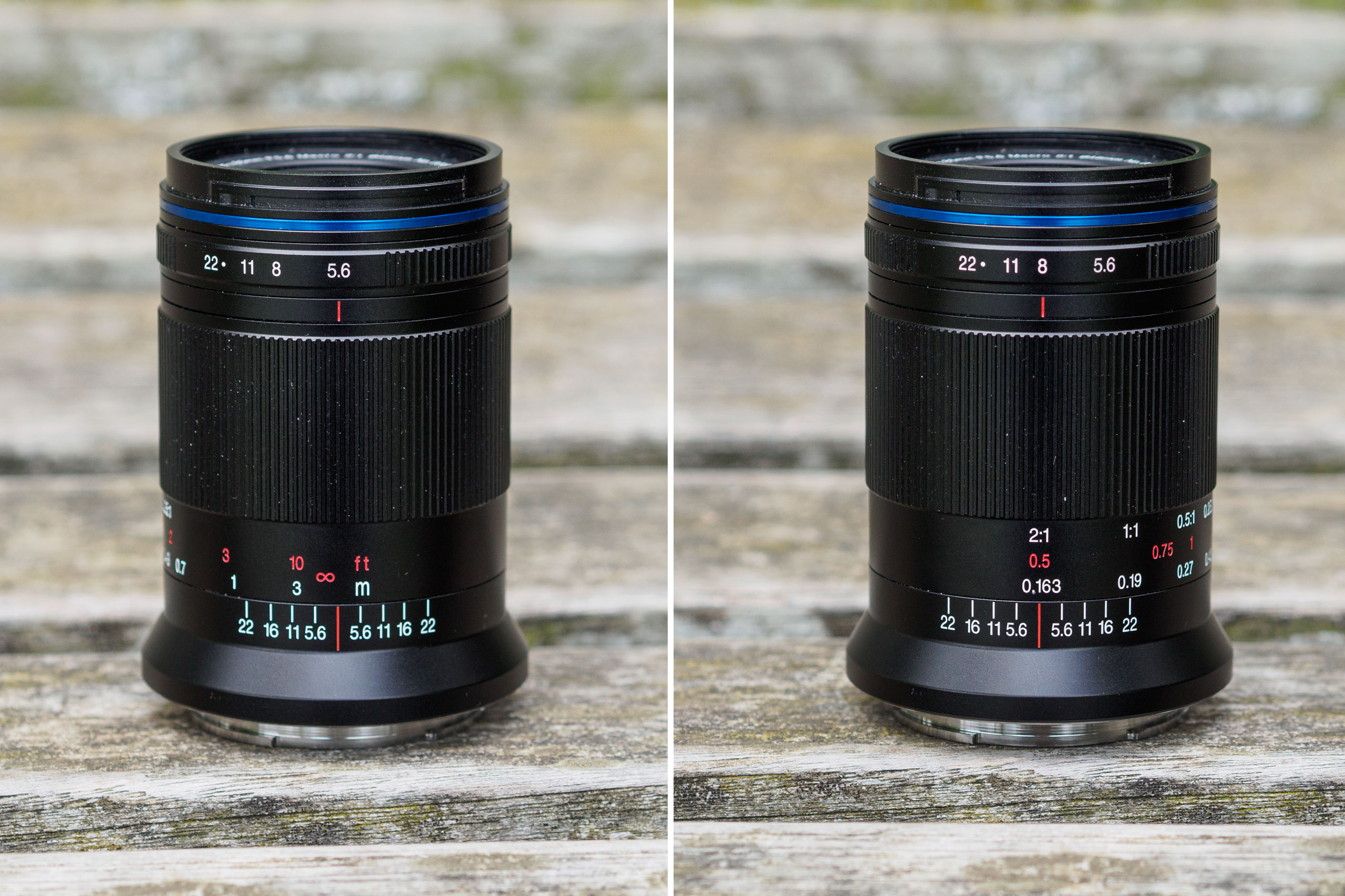
Focusing is internal, so the lens’s length doesn’t change between infinity focus and the 16.3cm minimum
With its compact size and light weight, this lens feels quite different on the camera to conventional f/2.8 short-telephoto macros. Compared to the Sony FE 90mm F2.8 Macro G OSS, for example, it’s less than half the weight, and two-thirds of the length. I tested it mainly on the Sony Alpha 7R IV, and it’s so small and light that you barely notice it’s there. This also makes it a good match for use on Sony’s compact A6000-series APS-C models.
With no electronics on board, the lens can’t automatically engage the camera’s focusing aids when you turn the focus ring. Instead, you’ll need to set up a readily accessible custom button to engage live view magnification, in order to get the most accurate focus. At extremely high magnifications, the best approach to focusing is usually to put the camera on a tripod and use a macro focusing rail to fine-tune the distance between the camera and the subject.
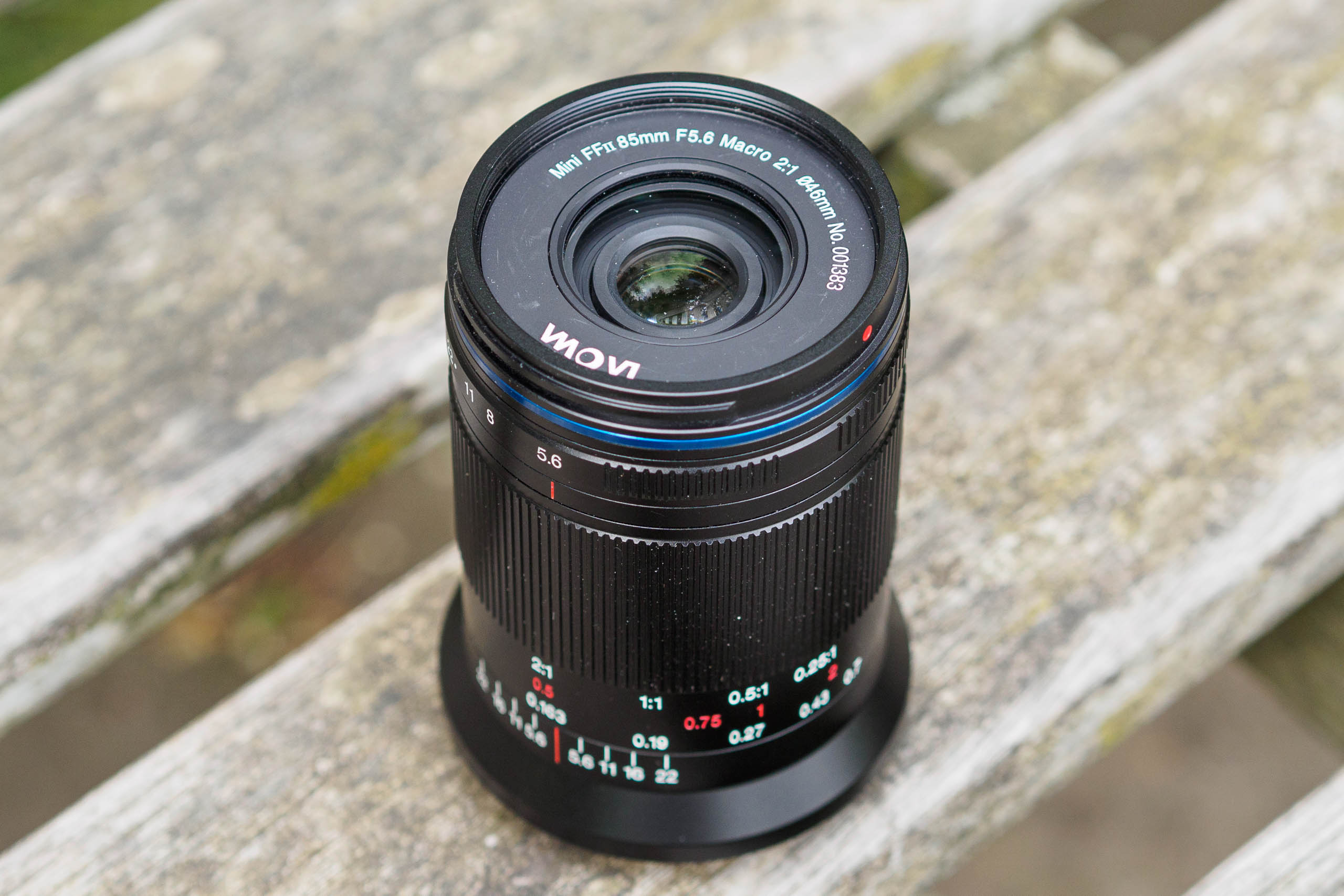
The lens employs 46mm filters. The internal optical groups move right to the front of the barrel at closest focus.
Even at its closest focus setting, the Laowa 85mm f/5.6 Macro offers a comfortable working distance of about 6cm from the front of the lens to the subject, which gives you a fighting chance of photographing insects without always scaring them away. Thanks to its slim barrel, it’s also less prone to casting a shadow on your subject compared to larger lenses. Overall, it’s a pleasant little lens to shoot with.
Laowa 85mm f/5.6 2x Ultra Macro APO: Performance
Macro lenses are expected to achieve a high standard of optical quality, and thankfully, the Laowa 85mm f/5.6 doesn’t disappoint. With its 60MP sensor, the Sony A7R IV provides a stern test, but this little lens proves up to the challenge. It resolves a very creditable level of detail from corner to corner even at f/5.6, and sharpens up even further at its optimum apertures of f/8 and f/11. Stop down further and detail softens slightly due to diffraction, but that’s usually a worthwhile trade-off against the increased depth of field. Essentially, this is a lens for which the choice of aperture generally comes down to light levels and aesthetics – not whether it’s sharp enough.

The Laowa 85mm f/5.6 2x Ultra Macro APO resolves plenty of detail from corner to corner. Sony Alpha 7R IV, 1/250sec at f/8, ISO 500
As we’d expect from a macro lens, curvilinear distortion is practically non-existent. Thanks to the modest maximum aperture, there’s barely any vignetting to speak of, either. As for chromatic aberration, a little colour fringing can certainly be visible if you if you zoom into 60MP files and view them at 100% onscreen, but by any sensible measure it’s inconsequential in real-world use. Put simply, this is another optically excellent macro lens from the Laowa stable.
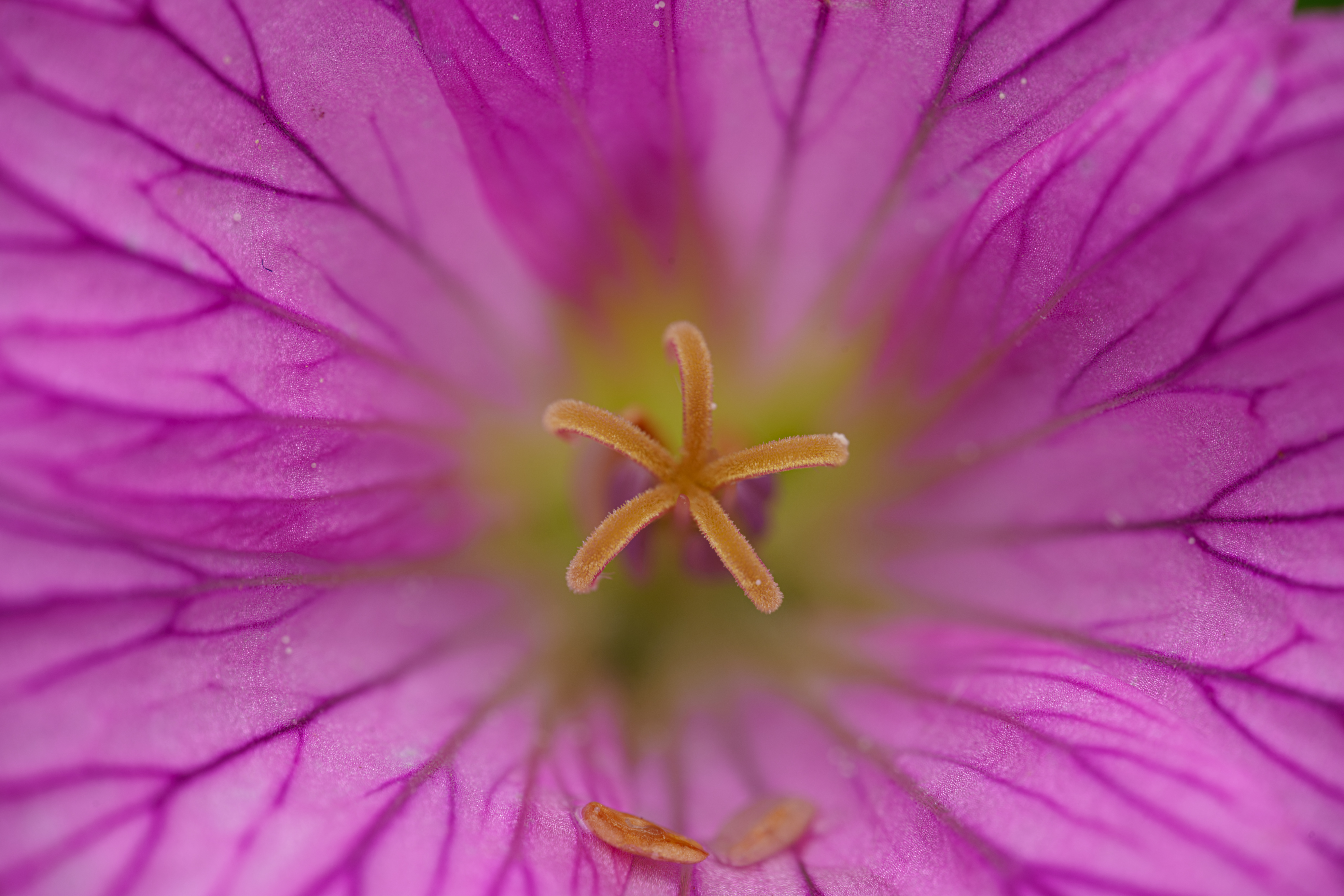
At 2:1 magnification, the lens can focus on a subject measuring just 18mm x 12mm. Sony Alpha 7R IV, 1/4sec at f/8, ISO 400
One thing you may have to watch out for, though, is flare. If you shoot towards the light, so the sun is impinging directly on the front element, the lens can be subject to a striking veiling effect. This is particularly strong wide open and diminishes slightly at smaller apertures. Most of the time you’ll probably want to avoid this, but sometimes it can be exploited for creative effect.
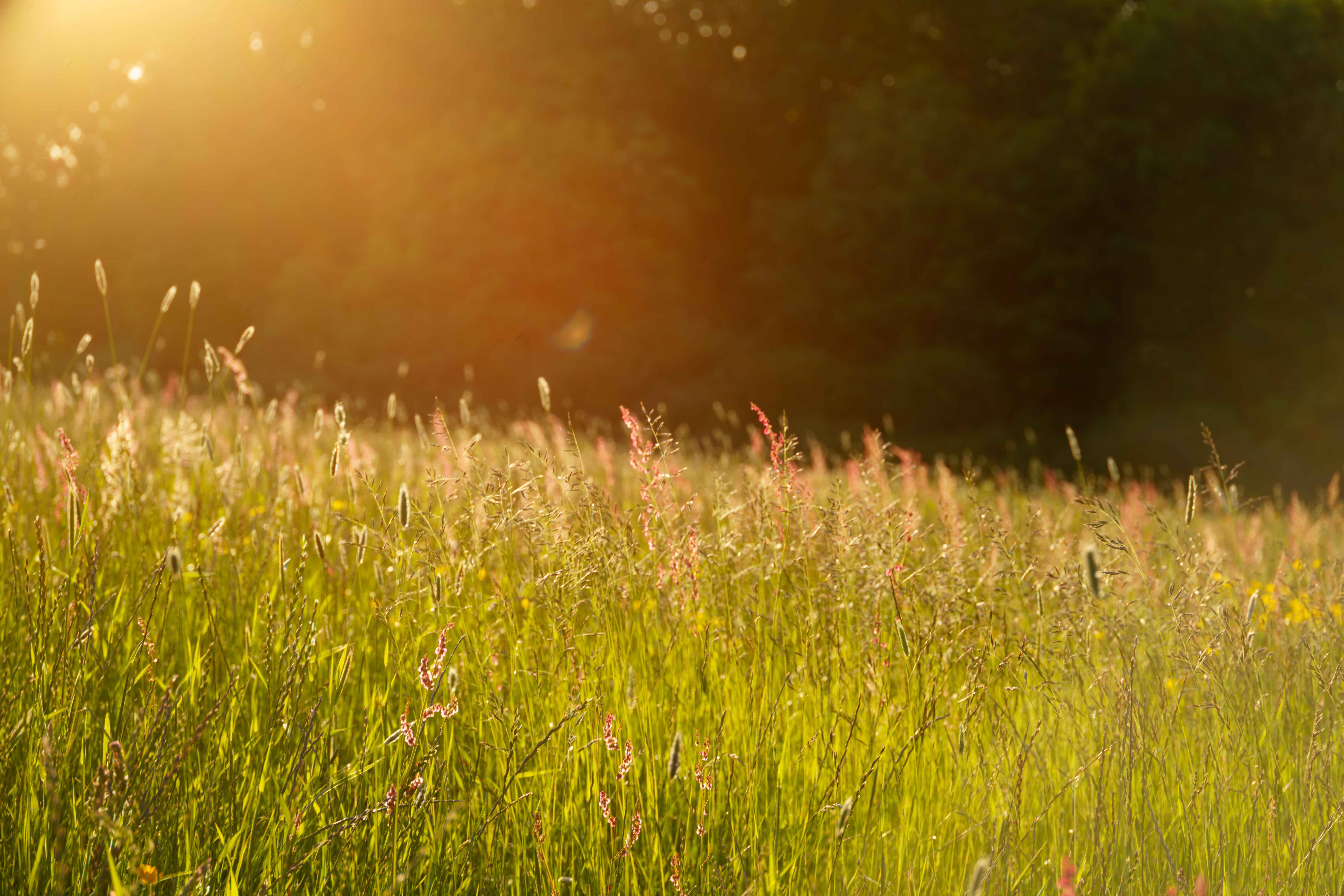
Flare can be quite spectacular when shooting into the light. Sony Alpha 7R IV, 1/100sec at f/8, ISO100
Given its f/5.6 maximum aperture, this lens isn’t going to be the best choice for shooting selective-focus close-ups with heavily blurred backgrounds. The 7-bladed aperture also gives distinctly heptagonal out-of-focus highlights when closed down, which won’t be to everyone’s taste. Stick with f/5.6, though, and you’ll get attractive background blur, with soft-edged out-of-focus highlights and just a little ‘cats eye’ effect towards the corners.
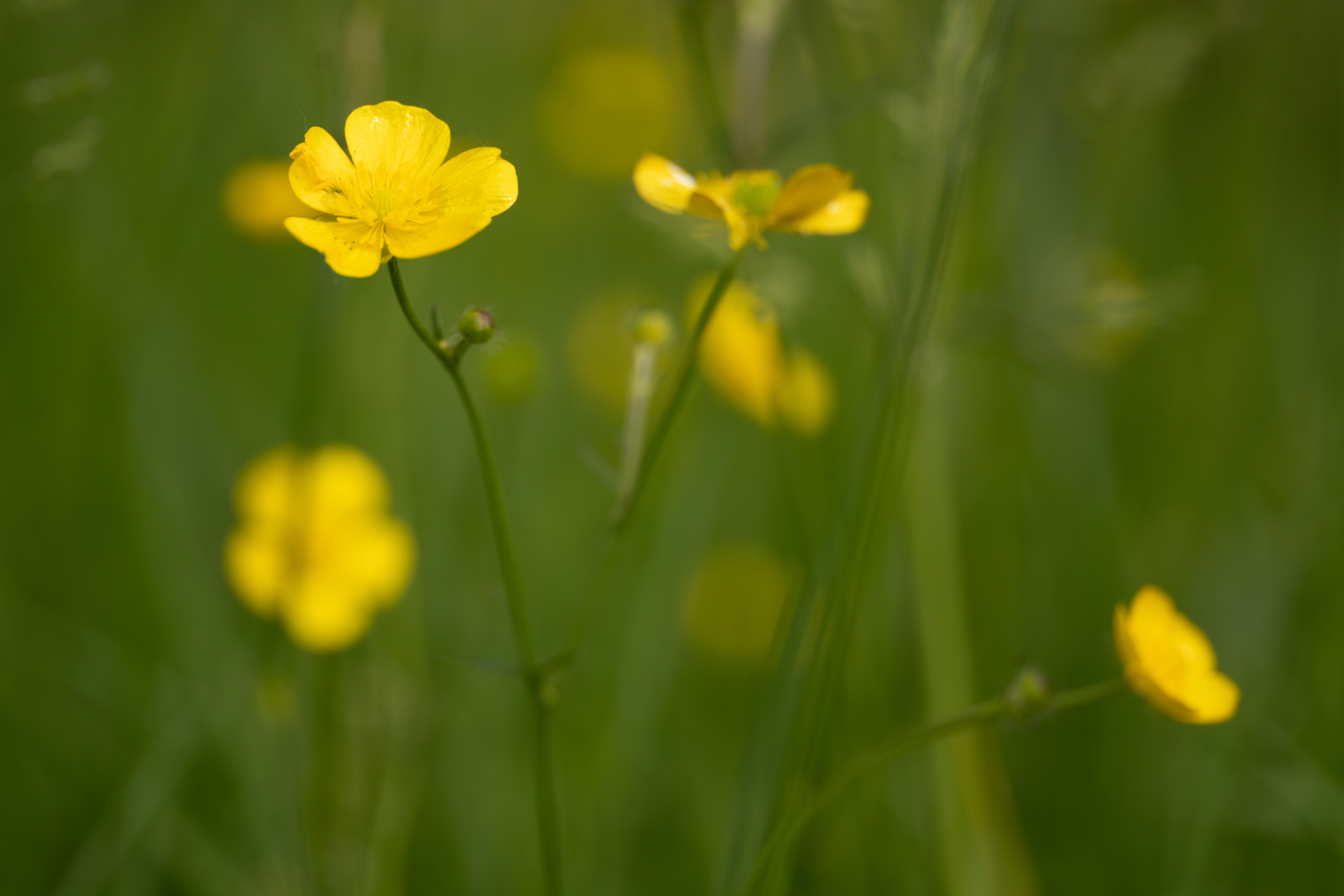
At f/5.6, depth of field is still pretty shallow, and backgrounds are attractively blurred. Sony Alpha 7R IV, 1/2000sec at f/5.6, ISO 100
Overall, the biggest challenges with using this lens to its maximum potential come down to the exacting techniques required for extreme close-up shooting. Not only are the blurring effects of both camera shake and subject movement dramatically amplified at close range, but also the inevitable effects of optical physics mean that the effective aperture decreases by one stop at life-size magnification, and two stops at 2:1. What’s more, depth-of-field is vanishingly slim, even with the aperture stopped down fully to f/22 (which at 2:1 effectively becomes f/44, meaning diffraction blurring is even more marked).
Together, these factors can leave you juggling difficult choices when it comes to exposure. For example, if you want to shoot extreme close-ups of flowers or plants outdoors, you’ll only be able to shoot on the stillest of days. Even then, you may need to boost the ISO to keep shutter speeds sensible.
Alternatively, if you want to photograph insects, you’ll need to use fast shutter speeds, which means either setting high ISOs, or employing flash with some sort of diffuser. If you demand high levels of front-to-back detail, you’ll need to employ focus bracketing to create composite images. Overall, you’ll probably be happiest if you’re prepared to accept image files which aren’t pixel-perfect when viewed at 100% onscreen.
Laowa 85mm f/5.6 2x Ultra Macro APO: Our Verdict
The Laowa 85mm f/5.6 2x Ultra Macro APO is a great example of what can be done when designers use their imagination to break away from existing conventions of what lenses should look like. We often tout small optics as being one of the big attractions of APS-C and Micro Four Thirds systems, but Venus Optics has demonstrated that it’s also possible to build compact designs for full frame, simply by using a smaller aperture (or in effect, the same equivalent aperture).

The Laowa 85mm f/5.6 2x Ultra Macro APO is one of the smallest macro lenses available for full-frame mirrorless
You might reasonably wonder why, if such a lens were worth making, it hasn’t been done before. But to a large part, this reflects the fact that the 2-stop drop in brightness at 2:1 would be seriously problematic in the optical viewfinder of a DSLR. However, there’s no such drawback with the electronic viewfinders of mirrorless cameras.
That smaller maximum aperture does, however, result in some practical limitations. This lens isn’t best suited to a certain style of selective-focus shooting with artfully blurred foregrounds and backgrounds, and neither will it sensibly double up as a portrait lens. In these cases, a conventional f/2.8 optic would be a better choice. Instead, it’s a specialist option that’ll do a much better job of shooting close-ups than any standard zoom.
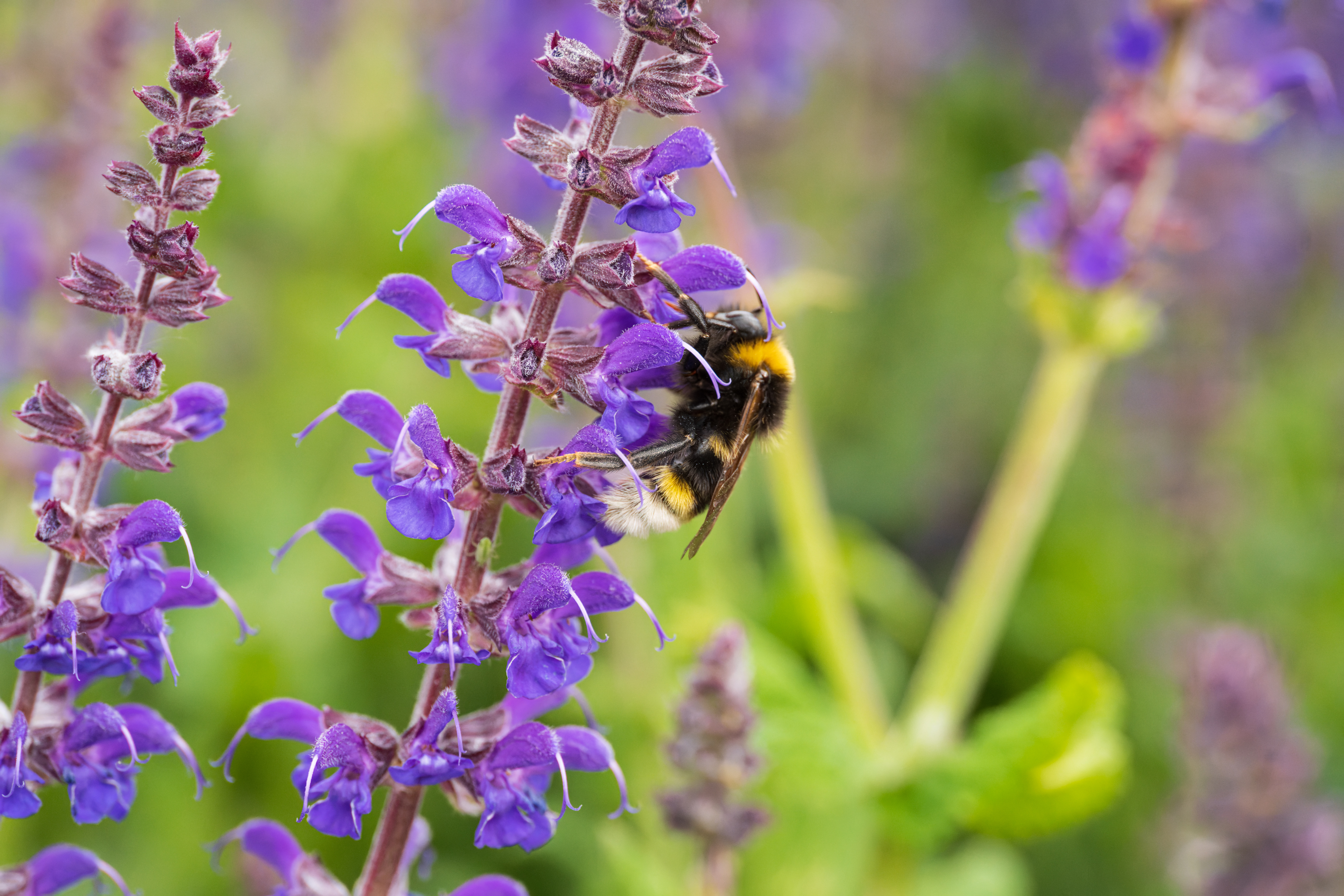
Here, I used a fast shutter speed and high ISO to avoid subject motion blur. Sony Alpha 7R IV, 1/1250sec, ISO 6400
This, really, is the key to the Laowa 85mm f/5.6’s attraction. It allows you to drop a macro lens into a bag to go with a set of zooms, without adding much weight or taking up significant extra space. Compared to other compact macro lenses such as the Canon RF 35mm F1.8 IS STM, Nikon Nikkor Z MC 50mm f/2.8 or Sony FE 50mm F2.8 Macro, it offers higher magnification and a longer working distance, which usually equates to a more attractive perspective. Used with care and understanding of its limitations, it’ll deliver fine results. If you enjoy shooting close-ups but never seem to have space to fit a macro lens in your bag, it might just what you need.

Laowa 85mm f/5.6 2x Ultra Macro APO: Full Specifications
